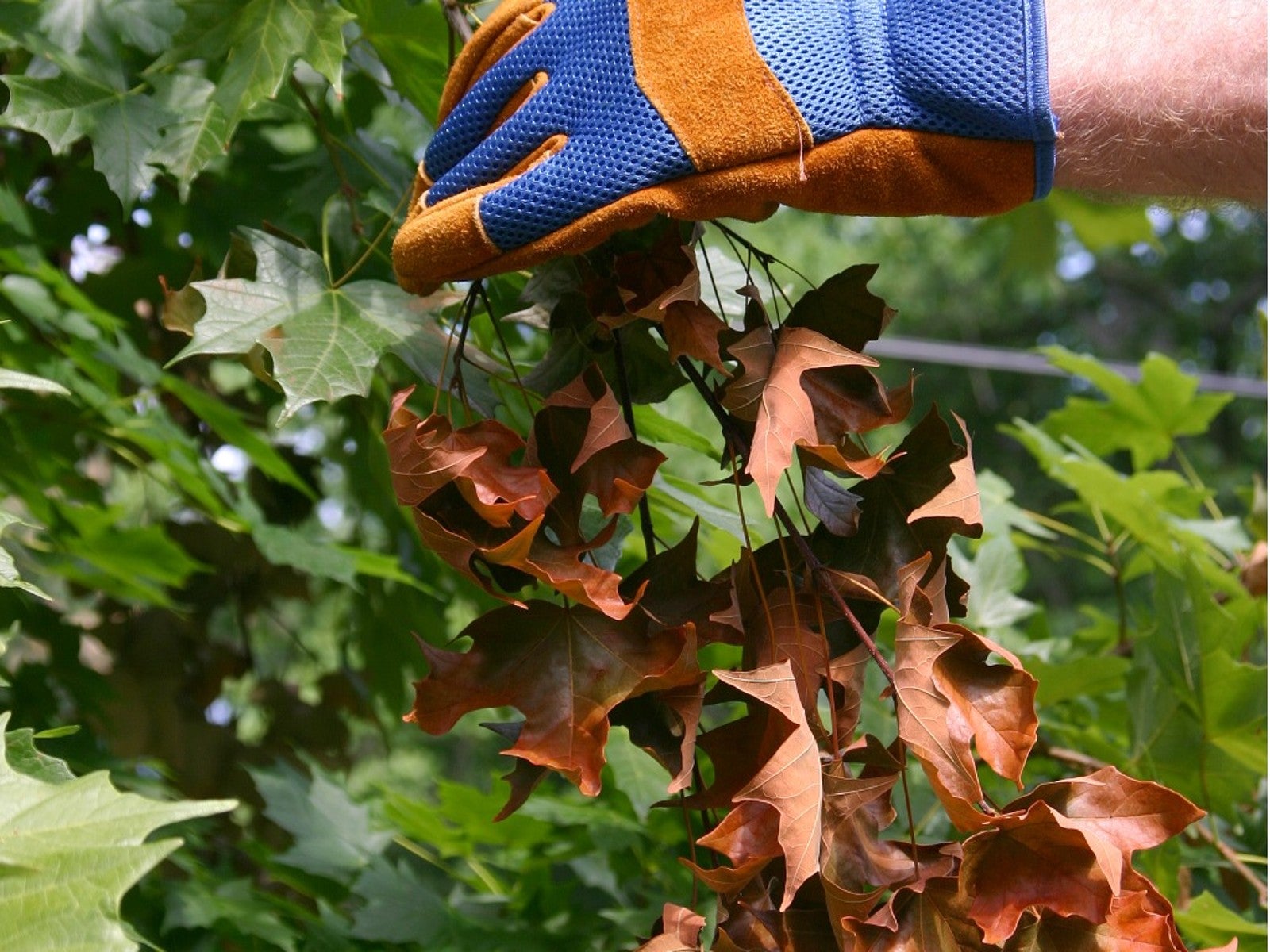Patches Of Brown Leaves On Trees - Fall Color, Cicada Damage Or Something Else?


Cicadas are not your typical insect pest. When they show up, there can be an awful lot of them, some are dramatically long-lived, and the list of trees they can damage seems infinite. It is no wonder you panic when you read that the brown leaves you are seeing on tree branches is a symptom of a cicada infestation.
But do those patches of brown foliage result from cicada damage to leaves? Cicadas may or may not be responsible. Read on for more information about cicada branch damage and the many other potential causes of brown leaves on trees.
Cicada Damage to Trees
It’s quite rare to have just one or two cicadas in your garden. While their populations are limited in forests, in backyards, parks and orchards, higher populations are the norm. If you have an acre of land, the cicada population may exceed 1.5 million. But most of them will be living underground.
Adult cicadas emerge from the ground to mate, then the female lays her eggs in tree branch. She uses a specialized body part to pierce a series of holes in the bark where she lays her eggs. In time, the eggs hatch into nymphs and drop to the ground where they dig in to search for roots, and they can stay for 13 to 17 years. When fully mature, they emerge as adults and the cycle continues. Adult cicadas only live a few weeks.
It is the holes pierced in the branch bark – termed flagging - that causes the branch tips to die and the leaves to turn brown. Note that this cicada flagging damage rarely does significant harm to trees, and it does not damage at all to mature, healthy trees.
Is It Circada Damage?
If you are noting that the leaves on your trees are turning brown, you’ll want to figure out if this is cicada brand x damage… or something else. The first question is whether the trees with dead branches are deciduous or evergreen. If the answer is evergreen, you’ll need to find another cause. Cicadas usually don’t frequent evergreen trees.
Were the branches big or small? Cicadas almost always lay their eggs on small twigs within 12 inches (30.48 cm.) from the branch tip. Does the cicada tree damage look like a row of puncture wounds with cracks connecting them length-wide along the twig? If not, it isn’t cicadas. Finally, ask yourself if there were 17-year cicadas anywhere in the immediate area of your yard this year. If you didn’t see any, the damage is probably not cicadas. They aren’t known to travel very far, and you would have noticed them had they been close by.
Gardening tips, videos, info and more delivered right to your inbox!
Sign up for the Gardening Know How newsletter today and receive a free copy of our e-book "How to Grow Delicious Tomatoes".
Other Potential Causes
If the brown leaves you are worrying about have appeared in fall, check first to make sure it’s not just a normal fall-color dying back of foliage. Look at your neighbor’s leaves up and down the street. If everyone’s leaves are turning brown and it is October, you have your answer.
Aside from that, the browning leaves might also be caused by petiole borer. This is the larval stage of a wasp. The wasp also punctures a hole in a tree to deposit its eggs. You can tell if it is the petiole borer because the holes it pierces are in the little stalk that connects a leaf to the branch. Generally this doesn’t cause serious problems. The issue could also be a fungal disease like powdery mildew or anthracnose.

Teo Spengler is a master gardener and a docent at the San Francisco Botanical Garden, where she hosts public tours. She has studied horticulture and written about nature, trees, plants, and gardening for more than two decades. Her extended family includes some 30 houseplants and hundreds of outdoor plants, including 250 trees, which are her main passion. Spengler currently splits her life between San Francisco and the French Basque Country, though she was raised in Alaska, giving her experience of gardening in a range of climates.
-
 Zinnias On Repeat: 10 Glorious Cut-And-Come-Again Varieties For Endless Summer Bouquets
Zinnias On Repeat: 10 Glorious Cut-And-Come-Again Varieties For Endless Summer BouquetsThese zinnia varieties keep giving all summer, making them the perfect choice for dedicated cutting gardens – or just the occasional homegrown bouquet.
By Ellen Wells
-
 Create A Romantic Garden Straight Out Of Bridgerton: Regency Era Romance In Your Garden
Create A Romantic Garden Straight Out Of Bridgerton: Regency Era Romance In Your GardenTry some romantic garden ideas straight out of Bridgerton. Flowers and gardens in the Regency era were lush and charming and you can get the same look!
By Bonnie L. Grant